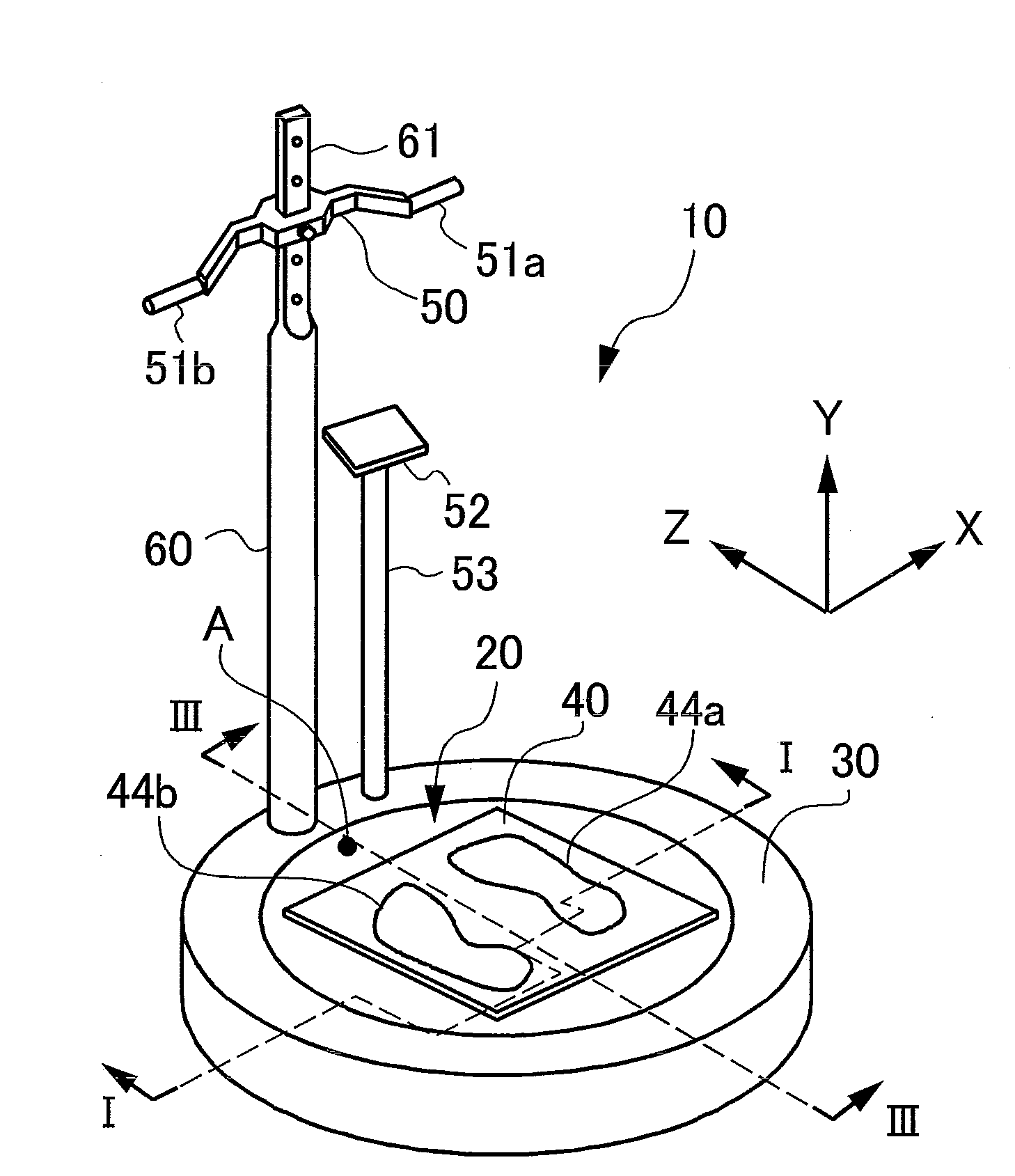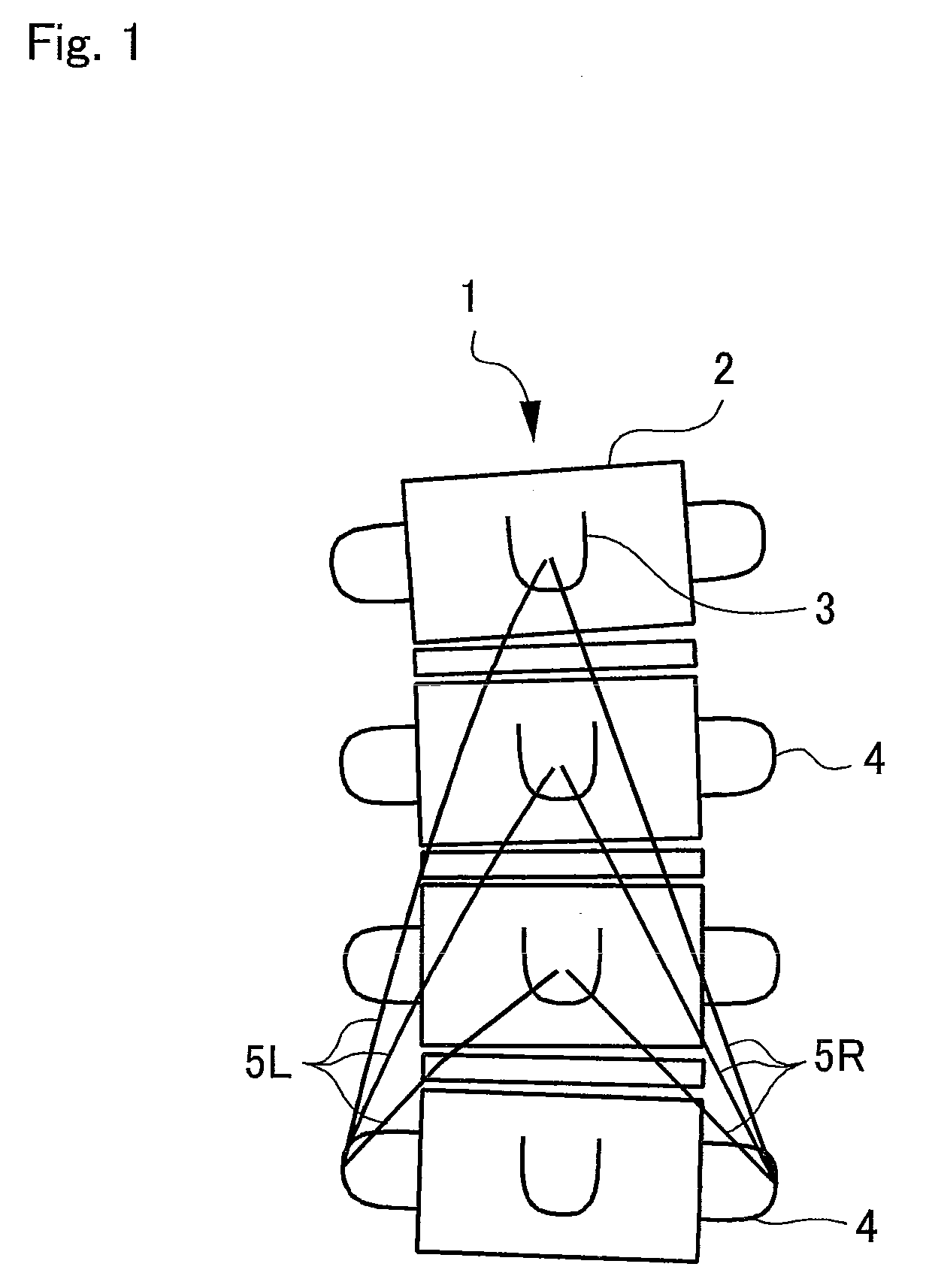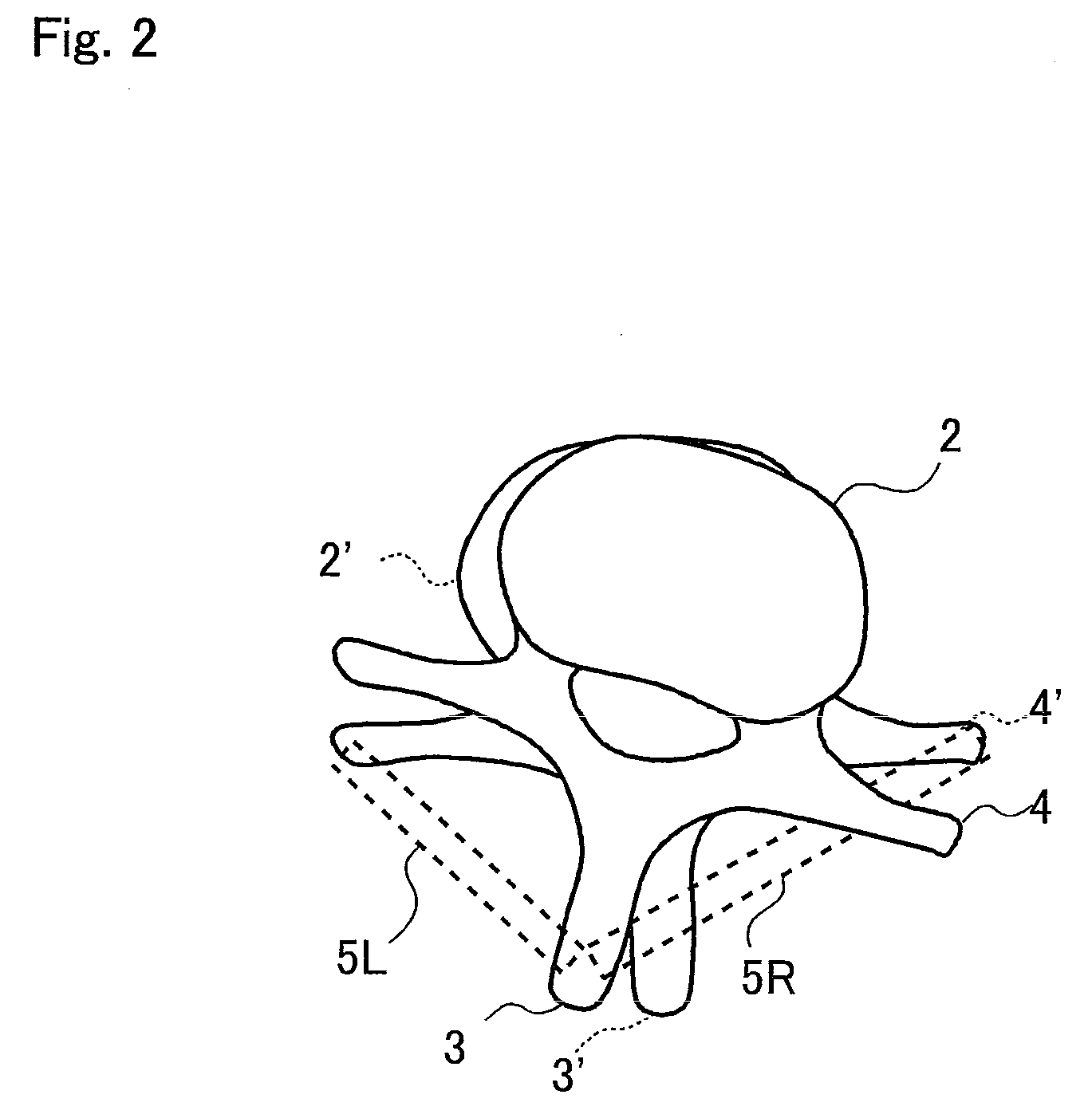Spinal correction device
a technology for spinal cord and spine, which is applied in the field of spinal cord correction devices, can solve the problems of complex structure of the positioning mechanism device for such adjustment and the large size of the device, and achieve the effects of stabilizing the posture of the user, short oscillation, and quick oscillation
- Summary
- Abstract
- Description
- Claims
- Application Information
AI Technical Summary
Benefits of technology
Problems solved by technology
Method used
Image
Examples
Embodiment Construction
[0025]First, the principle behind achieving the spinal correction effect according to the present invention will be described.
[0026]As illustrated in FIG. 1, transversospinal muscles 5L and 5R of an erector spinal muscle segment (not shown) for supporting a vertebra 2 constituting a spinal column 1 are muscles that connect a transverse process 4 lateral to the vertebra 2 and a spinous process 3 rearward to (on the rear side of) the vertebra 2. When the spinal column is laterally bent, for example, one transversospinal muscle 5R of the left and right transversospinal muscles (5L and 5R) stretches. If the person is healthy, the lateral bend of the spinal column 1 is resolved by the contractile force of the transversospinal muscle 5R. Nevertheless, in a case where the contractile force of the transversospinal muscle 5R has decreased, the lateral bend of the spinal column 1 cannot be resolved. The spinal column 1 that cannot fully resolve a lateral bend, that is, the spinal column 1 hav...
PUM
 Login to View More
Login to View More Abstract
Description
Claims
Application Information
 Login to View More
Login to View More - R&D
- Intellectual Property
- Life Sciences
- Materials
- Tech Scout
- Unparalleled Data Quality
- Higher Quality Content
- 60% Fewer Hallucinations
Browse by: Latest US Patents, China's latest patents, Technical Efficacy Thesaurus, Application Domain, Technology Topic, Popular Technical Reports.
© 2025 PatSnap. All rights reserved.Legal|Privacy policy|Modern Slavery Act Transparency Statement|Sitemap|About US| Contact US: help@patsnap.com



